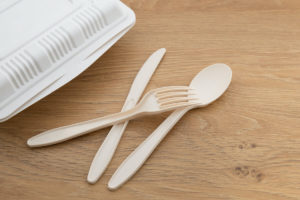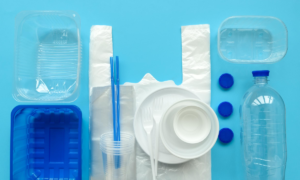- Research & Studies
- National
- International
Can green infrastructure keep microplastics out of the environment?
You may have heard of the Great Pacific garbage patch, a large collection of ocean debris, but the majority of plastic waste in the environment is subtler: tiny particles ranging from the size of a pea to the thickness of a human hair – or smaller.
A team of researchers in the civil and mineral engineering department in the Faculty of Applied Science & Engineering – including Associate Professor Elodie Passeport, Associate Professor Jennifer Drake and PhD Student Kelsey Smyth – are studying what happens to these microplastics as they make their way into ditches, streams, rivers and lakes, especially during heavy rainstorms.
In a paper published earlier this year, they showed that human-engineered structures known as bioretention cells are a useful strategy for controlling microplastics in the environment.
Writer Tyler Irving sat down with Passeport to talk about some of her team’s recent research.
Can you briefly describe the challenge you’re dealing with?
Any time it rains in an urban area, the water doesn’t infiltrate into the soil the way it would in nature, because there are roads and parking lots and buildings in the way. The water flows over them and carries anything accumulated on these surfaces along with it.
Microplastics are one of the many forms of contamination in this water. They often take the form of microfibres that come from our clothing – polyester fabrics, for example – which are not only shed by people walking around the city, but also arrive from further away via atmospheric deposition, that is, through the air. There are also a lot of plastic pieces from litter, such as polystyrene food containers or polyethylene plastic bags, and bits of rubber, mostly from car tires.
The question is: Can we filter them out?
What is a bioretention cell?
There are lots of different designs, but what they all have in common is that they aim to control stormwater volumes and peak flows by providing a more natural flow of water. They consist of a depression in the ground from which the natural soil has been removed, and then filled with some kind of engineered media that allows water to flow through. They are often planted with vegetation as well.
Over the past 20 years or so, we’ve started to see more bioretention cells in our urban environments: There are some on the Toronto waterfront. One of the ones we’ve studied in detail is at the Kortright Centre for Conservation in Vaughan, Ont., which is managed by the Toronto and Region Conservation Authority.
How can bioretention cells help control microplastic pollution?
Slowing down the flow of water helps control stormwater surges, but it can also help remove solids that are suspended in the water by physically trapping them.
Microplastics are not easily degradable by bacteria, but they are a form of suspended solids, so we wanted to know whether the bioretention cell would be able to trap them.
Read the full news story at U of T News.


